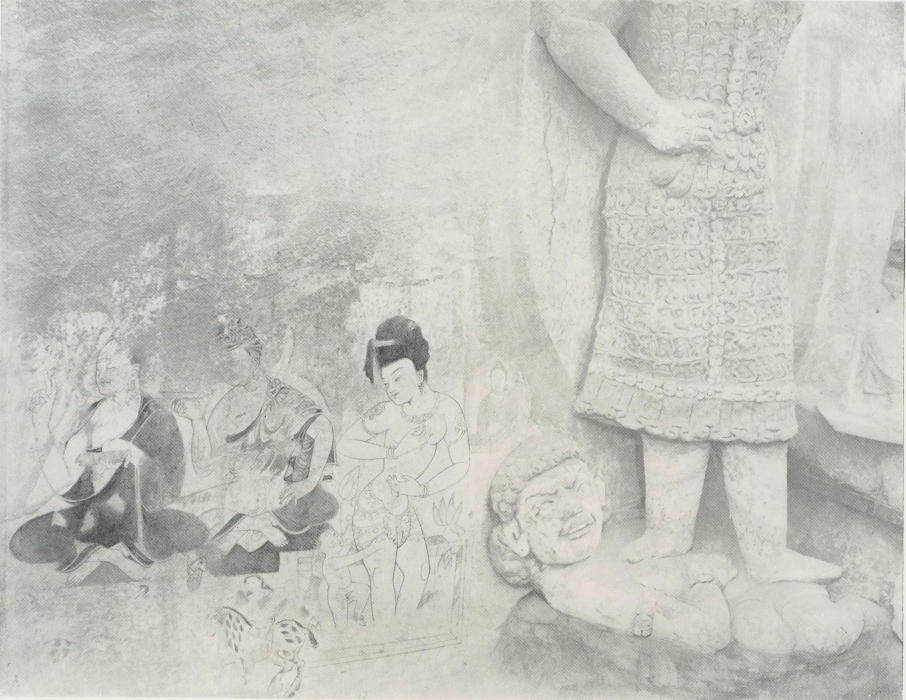Try Amazon Fresh

Try Amazon Audible Premium Plus and Get Up to Two Free Audiobooks
Statue in Smaller Cella of Buddhist Shrine, D. II.,
at Dandān-Uiliq, Khotan, Tarim Basin

Plate II, Ancient Khotan : vol.2 by Marc Aurel Stein

Smaller Cella of Buddhist Shrine, D. II., at Dandan-Uiliq, After Excavation.
p.20, Sand-Buried Ruins of Khotan by Marc Aurel Stein
The east wall of the small cella, owing to the backing afforded by the adjoining passage wall of the larger shrine, still stood to a height of about four feet;
but of its fresco decoration only the lowest portions survived.
In the south-east corner above the platform, only remains of the aureoles painted in a colour that now looked dark-brown,
around the corner image and the one to be described presently, could be made out.
The ground seemed to have been coloured a bright red brown.
As the work of clearing proceeded along this wall it revealed an interesting relief statue in stucco immediately in front of the platform.
As seen in Fig. 30, and in the enlargement of Plate II, it is a male figure, complete but for the head and the left arm, standing over the body of a prostrate foe.
The figure, which measured a little over three feet from the heel to below the arm-pit, is clad in a coat of mail reaching below the knees and elaborately decorated.
The small plates or scales which form the mail [lamellar] are shown above the waist overlapping each other in vertical rows,
while below it their arrangement is horizontal and their shape different.
Here the double rivets (or lacing) joining one plate above, the other are accurately indicated.
The gay colours of the successive rows of plates, alternately red-blue and red-green, were remarkably well preserved,
and no less so all details of the jewelled ornaments which are shown along the front and the lower edge of the coat and on the girdle around the waist.
From the lower edge of the coat of mail rich kilting depends. The right arm seems to have been dressed in a close-fitting sleeve,
but most of the surface-coating of the friable stucco had peeled off, and the colouring could no longer be distinguished.
The hand resting on the waist holds a small object which has also become indistinct through abrasion but which, as seen in the photograph, seems to suggest a money-bag.
Source: pp.251-252, Ancient Khotan : vol.1 by Marc Aurel Stein
Referenced as Fig. 2 in "An introduction to arms and warfare in classical Islam" by David Nicolle in Islamic Arms and Armour, ed. Robert Elgood, London 1979
Fig. 2. Stucco figure in shrine D II, Dandān-Uliq. Khotan: eastern Turkestan, late eighth century. (Sinkiang, China)
Previous: A horseman with offering bowl from Dandān-Uiliq at Khotan, Tarim Basin
Start: Wall painting of Warriors from Tumshuk (near Turfan)
Back to Tarim Basin Frescos



